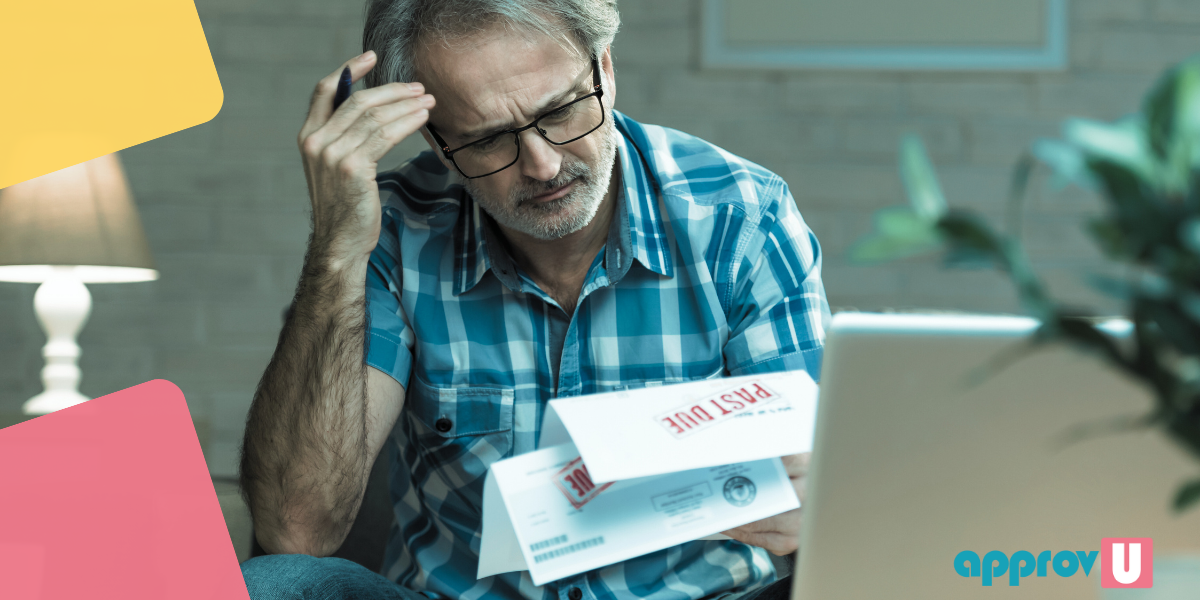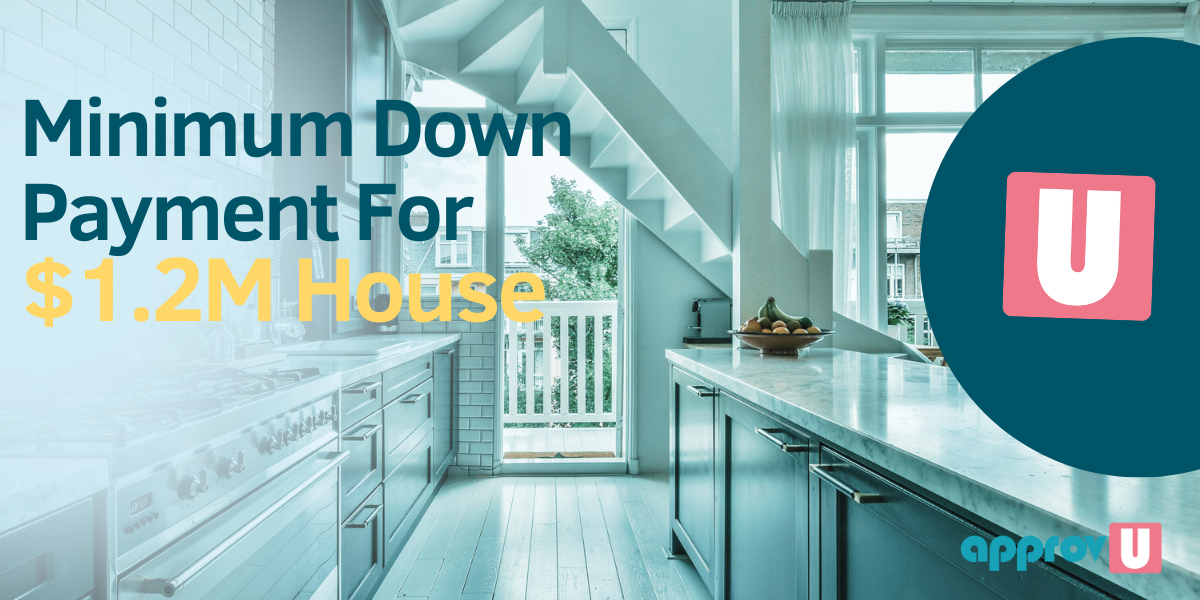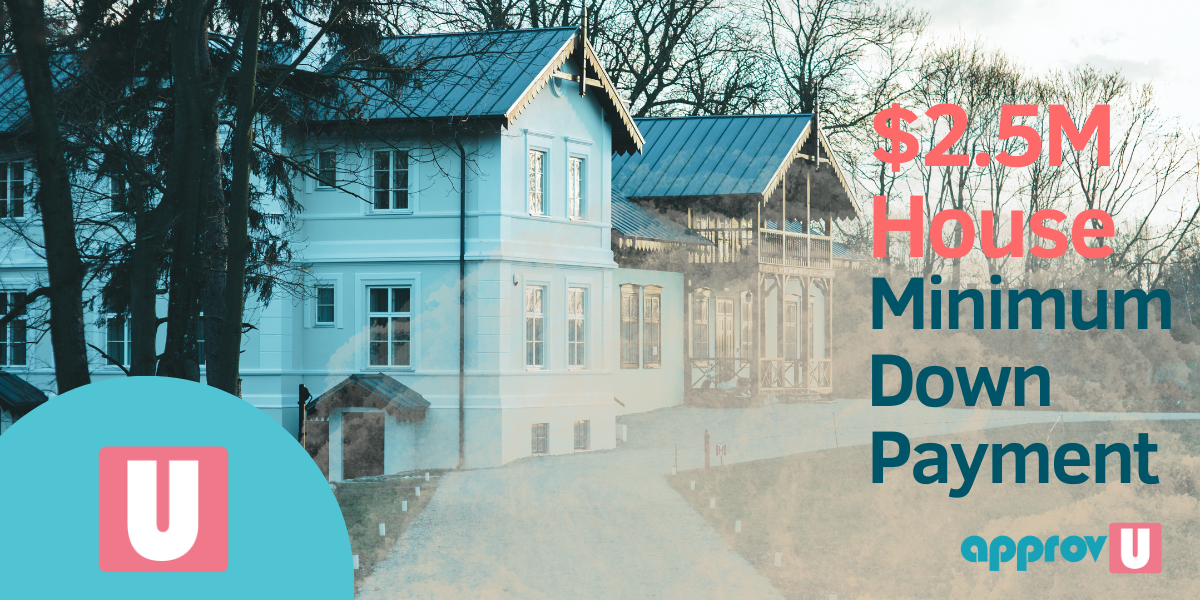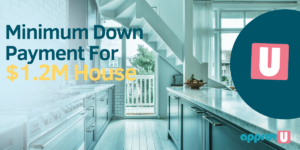Are you wondering if you’ll be to get a mortgage after bankruptcy?
Don’t worry. You’re not alone.
Many people find themselves in a similar situation, and the good news is that it’s entirely possible to bounce back and secure a mortgage after bankruptcy.
In this article, we will walk you through the steps and strategies to make your dream of homeownership a reality once again.
You can review our previous if you are looking for how to get a mortgage after foreclosure in Canada.
Before we dive into the nitty-gritty, let’s quickly go over what bankruptcy means and how it affects your ability to obtain a mortgage.
What is a Bankruptcy?
Bankruptcy is a legal process where an individual or a business declares their inability to pay off their debts. It’s a tough spot to be in, no doubt about it.
When you file for bankruptcy, your assets are liquidated to pay off your debts, and you’re granted a fresh start financially.
However, one of the consequences of bankruptcy is that it can significantly impact your creditworthiness.
It takes a toll on your credit score and can make lenders hesitant to approve you for a mortgage.
But fear not! We’re here to guide you through the process of rebuilding your credit and showing lenders that you’re a responsible borrower, even after bankruptcy.
Now, let’s focus on the specific steps you need to take to get that coveted mortgage after bankruptcy in Canada. Ready?
Let’s go!
Understanding the Basics of Bankruptcy in Canada
It’s important to clearly grasp what you’ve been through and how it affects your mortgage journey.
When you file for bankruptcy, you’re essentially admitting that you can’t meet your financial obligations and need a fresh start.
The process of filing for bankruptcy involves working with a licensed insolvency trustee (formerly known as a bankruptcy trustee).
They’ll help you assess your financial situation, determine which assets can be used to pay off your debts and guide you through the legal proceedings.
It’s important to choose a trustworthy trustee who has your best interests at heart.
Consequences of Bankruptcy on Your Mortgage Plans
Now, let’s talk about the consequences of bankruptcy on your mortgage plans.
Bankruptcy stays on your credit report for a certain period, typically six to seven years, in Canada.
During this time, your credit score takes a hit, making it harder to get approved for a mortgage.
But don’t let that discourage you! There are ways to rebuild your credit and improve your chances of getting a mortgage in the future.
Rebuilding your credit after bankruptcy is crucial. It shows lenders that you’re committed to managing your finances responsibly.
Start by creating a solid budget and sticking to it.
Track your expenses, cut unnecessary costs, and save as much as you can.
Building an emergency fund will provide a safety net and demonstrate your financial stability to lenders.
Consider obtaining a secured credit card as well. It requires a cash deposit as collateral, reducing the lender’s risk.
By using the card responsibly and making timely payments.
You’ll gradually rebuild your credit history.
Remember, bankruptcy is not the end of the road.
It’s a chance to start anew and make better financial decisions. So, embrace this opportunity and move on to the next steps on your journey to getting a mortgage after bankruptcy in Canada. You’ve got this!
Factors to Consider Before Applying for a Mortgage After Bankruptcy
Before diving headfirst into the mortgage application process, you should consider a few important factors.
Evaluating these aspects will set you up for success and increase your chances of securing a mortgage after bankruptcy. Let’s go over them together.
Your Financial Situation
First and foremost, take a close look at your financial situation.
Evaluate your income, expenses, and overall stability. Lenders want to see that you have a reliable source of income to make regular mortgage payments.
If you’re currently employed and have a steady job history, that’s definitely a positive sign.
However, if you’ve recently changed jobs or experienced gaps in employment, it might be beneficial to wait until you have a more stable work history.
Your Down Payment Savings
Another crucial factor to consider is saving for a down payment.
Having a substantial down payment shows lenders that you’re serious about your financial commitments and reduces their risk.
Aiming for a down payment of at least 20% of the purchase price is generally recommended.
Saving for a larger down payment can also improve your chances of getting approved for a mortgage and potentially help you secure better interest rates.
Your Credit Score
Now, let’s talk about your credit score.
After bankruptcy, your credit score takes a hit, but that doesn’t mean you’re doomed forever.
Take the time to check your credit report and ensure that it accurately reflects your financial situation. Look for any errors or discrepancies that you can dispute and have corrected.
Improving your credit score takes time and effort, so be patient.
Focus on paying your bills on time, reducing outstanding debts, and lowering your credit utilization.
These steps will help rebuild your credit and boost your chances of mortgage approval.
By carefully considering these factors—your financial situation, saving for a down payment, and improving your credit score—you’ll be better equipped to navigate the mortgage application process confidently.
Patience and determination are key during this phase, so keep your eyes on the goal of homeownership.
The next section explores how to prepare for a mortgage application after bankruptcy. Let’s keep moving forward!
Preparing for a Mortgage Application after Bankruptcy
Applying for a mortgage after bankruptcy in Canada involves numerous steps to demonstrate your creditworthiness to potential lenders.
Here’s a step-by-step guide to help you navigate the process:
- Check Your Discharge Status: Ensure you have been discharged from bankruptcy before starting your application. Lenders usually require at least two years since discharge before considering your application.
- Obtain Your Credit Report: Use a credit bureau such as Equifax or TransUnion to obtain your credit report. This will give you a clear idea of where your credit stands after bankruptcy.
- Repair Your Credit: Start rebuilding your credit. Make payments on time, keep credit card balances low, and avoid applying for too many new credit accounts at once. Secured credit cards and loans can be useful tools for this.
- Save for a Down Payment: Lenders will likely require a larger down payment if you’ve been through bankruptcy. Saving a significant down payment can demonstrate financial responsibility and reduce the risk for the lender.
- Establish a Stable Income: Consistent and reliable income is crucial when applying for a mortgage. This may mean maintaining steady employment for a period of time before applying.
- Gather Necessary Documents: Collect all necessary financial documents. This typically includes tax returns, pay stubs, bank statements, and statements from any outstanding debts.
- Find a Mortgage Broker: Mortgage brokers with experience in helping people secure a mortgage post-bankruptcy can provide valuable guidance. They have relationships with various lenders and can help find those more willing to work with your situation.
- Apply for a Mortgage: With the help of your mortgage broker, submit your mortgage application. Make sure to provide all the necessary information and documents.
- Prepare for Higher Rates: Be aware that interest rates for borrowers post-bankruptcy are typically higher than conventional rates due to the higher perceived risk. You may be able to refinance for a lower rate after demonstrating a period of on-time payments.
Throughout the process, remember that patience is key. Rebuilding your credit and financial health after bankruptcy can take time, but you can successfully apply for a mortgage with dedication.
Mortgage Options for Individuals with a Bankruptcy History
Now that you’ve laid the groundwork and prepared for a mortgage application, it’s time to explore various options.
These options are available to individuals with a bankruptcy history.
While traditional lenders may be more hesitant to approve your application, there are alternative routes and government-backed programs that can help you achieve your homeownership goals.
Let’s dive in!
Traditional Lender Mortgages
When it comes to mortgage lenders, you have a few options to consider.
Traditional lenders, such as banks and credit unions, typically have stricter lending criteria, making it more challenging for individuals with a bankruptcy history to secure a mortgage.
However, it’s still worth exploring these options, especially if your financial situation has significantly improved since your bankruptcy.
Alternative Lender Mortgages
On the other hand, alternative lenders can be more flexible and understanding of your unique circumstances.
They specialize in providing mortgages to individuals with less-than-perfect credit or bankruptcy histories.
While alternative lenders may have higher interest rates and fees, they can be a viable option to get your foot in the homeownership door.
It’s essential to research and compares different lenders to find the one that offers the best terms and suits your needs.
Government-backed Programs
In addition to traditional and alternative lenders, there are government-backed programs and initiatives specifically designed to assist individuals with a bankruptcy history.
The Canada Mortgage and Housing Corporation (CMHC) offers one such program.
They provide mortgage loan insurance, which protects the lender in case of default. This insurance can help mitigate the lender’s risk and increase your chances of mortgage approval.
Provincial and Local Mortgage Programs
Moreover, various provinces in Canada offer programs and initiatives to support individuals with a bankruptcy history in achieving homeownership.
These programs may provide down payment assistance, lower interest rates, or other forms of financial support.
It’s worth exploring the options available in your specific province to take advantage of any assistance that can make your dream of homeownership more attainable.
Remember, each mortgage option has its pros and cons. Take the time to research and understand the terms, interest rates, and requirements of each lender or program.
Consider talking with one of our Mortgage Consultants to help you navigate the options and find the best fit for your circumstances.
We have the expertise you need to secure a mortgage after bankruptcy.
Learn More: Exploring the Mortgage Types in Canada
Stay optimistic and open-minded as you explore these various mortgage options.
With determination and a thorough understanding of the choices available to you, you’ll be one step closer to achieving your goal of homeownership.
In the next section, we’ll discuss finding the right mortgage lender for your needs.
Keep up the great work!
Finding the Right Mortgage Lender
Now that you clearly understand the different mortgage options available to individuals with a bankruptcy history, it’s time to explore a modern approach.
Let’s find the right mortgage lender in Canada using a modern approach.
Online mortgage matchmaking platforms, like approvU, can be incredibly helpful in your search for a suitable lender.
Let’s see how you can leverage such platforms to your advantage.
- Start with Research: Begin by researching online mortgage matchmaking platforms like approvU. These platforms connect borrowers with a network of lenders who specialize in working with individuals who have gone through bankruptcy. Look for platforms that have a user-friendly interface, positive reviews, and a strong track record of successful matches.
- Create Your Profile: Once you’ve chosen a platform, sign up and create your profile. Provide accurate information about your financial situation, bankruptcy history, employment details, and other relevant information. The more precise and comprehensive your profile, the better the chances of finding the right lender for your needs.
- Get Matched with Lenders: approvU uses algorithms to match borrowers with compatible lenders. These algorithms take into account your profile details, lender criteria, and compatibility factors to provide you with suitable matches. You’ll receive a list of lenders more likely to consider your application after bankruptcy as well as a full list of mortgage solutions you can apply for online.
- Review Lender Profiles and Offers: Take the time to review the profiles and offers of the matched lenders. Pay attention to their expertise, terms, interest rates, and any specific requirements they may have. This information will help you narrow your options and make an informed decision.
approvU simplifies the process of finding a suitable lender after bankruptcy.
It Streamlines research, matching, and communication, saving you time and effort.
You’ll increase your chances of finding the right lender who understands your situation and is willing to work with you by using approvU.
Applying for a Mortgage after Bankruptcy
Congratulations on reaching the stage of applying for a mortgage after bankruptcy!
Now, let’s explore how you can use the approvU online matchmaking platform to simplify and streamline the mortgage application process.
Let’s break down the steps to guide you through this exciting phase.
- Select Your Mortgage Options: Once you have reviewed and compared the mortgage solutions you’re most likely to get approved for, the next stage involves selecting your preferred mortgages and submitting your application for formal approval. You can select up to three mortgages from any lender to apply for.
- Complete the approvU Mortgage Application: approvU allows you to apply to multiple lenders simultaneously with just one application, increasing your chances of getting approved for a mortgage after bankruptcy. Provide all the required details, including your personal information, financial history, and bankruptcy details. Double-check everything before submitting to ensure accuracy.
- Provide Required Documentation Online: Gather the necessary documentation for your mortgage application and upload it securely through the approvU platform. This convenient online process saves you the hassle of visiting lenders in person and allows for a smooth and efficient application. You will need to provide proof of income, employment history, bank statements, tax returns, and any other financial documentation. Be diligent in organizing and providing accurate information to ensure a smooth application process.
- Communicate with Your Mortgage Consultant: Utilize the communication tools available on the approvU platform to connect with the Mortgage Consultant. Ask questions, seek clarification on terms, and discuss your specific situation. Clear and open communication is key to finding the right lender who understands your unique circumstances.
- Track the Progress of Your Application: With approvU, you can track the progress of your mortgage application online. Stay informed about the status of your application, any additional documents required, and updates from the lenders you’re working with. This transparency keeps you in the loop and ensures a seamless application process.
- Be Honest and Transparent: It’s essential to be honest and transparent throughout the application process. Disclose your bankruptcy history upfront and provide any supporting documentation requested. Being forthright demonstrates your commitment to rebuilding your financial life and establishes trust with the lender.
- Provide Explanations: Along with your bankruptcy disclosure, it’s helpful to provide explanations for the circumstances that led to your bankruptcy. Did you experience a medical emergency, job loss, or other significant life events? Sharing these details can give the lender a better understanding of your situation and show you’re proactive in moving forward.
- Follow Up and Respond Promptly: Stay in touch with your approvU Mortgage Consultant and respond promptly to requests for additional information or documentation. Timely communication demonstrates your dedication and seriousness in obtaining the mortgage.
- Have Realistic Expectations: Keep in mind that obtaining a mortgage after bankruptcy may involve certain limitations or requirements, such as a higher interest rate or a larger down payment. Be prepared for these possibilities and have realistic expectations. Remember, this is a stepping stone towards rebuilding your financial future.
By following these steps and staying organized, honest, and proactive, you’re on the right track to securing a mortgage after bankruptcy.
Remember, the journey may require patience and perseverance, but with determination and the right approach, you’ll be one step closer to achieving your dream of homeownership.
Keep moving forward, and in the next section, we’ll share some valuable tips for success. You’re doing great!
Tips for Success
Congratulations on reaching the stage of applying for a mortgage after bankruptcy!
As you move forward in this process, it’s important to keep a few tips in mind to maximize your chances of success.
Let’s explore some valuable tips to help you confidently navigate this journey.
- Patience is Key: Rebuilding your financial life takes time, and the mortgage application process is no exception. It’s crucial to be patient and stay committed to the long-term goal of homeownership. Remember that each step forward brings you closer to achieving your dream.
- Maintain Financial Discipline: Throughout the application process, it’s essential to maintain financial discipline. Continue to pay your bills on time, manage your debts responsibly, and avoid taking on new debts. This demonstrates to lenders that you’ve learned from past mistakes and are dedicated to improving your financial health.
- Save for Closing Costs: While saving for a down payment is important, don’t forget about closing costs. These expenses, such as legal fees, property appraisal, and land transfer taxes, can add up. Set aside additional funds specifically for these costs to ensure you’re fully prepared when the time comes.
- Stay Within Your Budget: Getting caught up in the excitement of buying a home is easy, but staying within your budget is crucial. Determine a comfortable price range for your mortgage and stick to it. Remember, owning a home comes with additional expenses beyond the mortgage payment, such as property taxes, insurance, and maintenance costs.
- Keep Building Your Credit: Even after obtaining a mortgage, continue to build your credit by making timely payments on all your debts. This ongoing effort will strengthen your creditworthiness and open up opportunities for better financial options in the future.
- Seek Professional Advice: Don’t hesitate to seek professional advice when needed. Consult with a mortgage broker, financial advisor, or real estate lawyer to ensure you make informed decisions. Their expertise can help you navigate any complexities that may arise.
- Celebrate Milestones: Don’t forget to celebrate the milestones along the way. Whether it’s being pre-approved for a mortgage, finding your dream home, or finally receiving approval, take the time to acknowledge and appreciate your achievements. It’s a testament to your hard work and resilience.
Conclusion
Congratulations on making it through this guide on getting a mortgage after bankruptcy in Canada!
We’ve covered a lot of ground, from understanding the basics of bankruptcy to preparing for a mortgage application and exploring various mortgage options.
Throughout this journey, you’ve shown resilience and determination to rebuild your financial life and achieve your dream of homeownership.
Remember, bankruptcy is not the end of the road. It’s a fresh start—a chance to learn from past mistakes and build a stronger financial foundation.
While getting a mortgage after bankruptcy may have challenges, it’s entirely possible with the right strategies and efforts.
By evaluating your financial situation, saving for a down payment, and working on rebuilding your creditworthiness, you’ve taken significant steps forward.
Researching and comparing lenders and considering alternative lenders and government-backed programs have widened your options.
As you move forward, be patient, maintain financial discipline, and seek professional guidance when needed. Remember that each milestone you achieve brings you closer to your goal.
Stay within your budget, celebrate your achievements, and keep building your credit.
Frequently Asked Questions about Mortgage After Bankruptcy
Is Consumer Proposal Same as Bankruptcy?
No, a consumer proposal and bankruptcy are not the same; they are two distinct legal processes under Canada’s Bankruptcy and Insolvency Act that individuals can use to address serious debt problems.
Consumer Proposal: A consumer proposal is an arrangement where you negotiate to pay creditors a percentage of what is owed to them, extend the time you have to pay off the debts, or both.
This is done through a Licensed Insolvency Trustee who will present the proposal to the creditors.
If the creditors accept the proposal, all of them are bound by its terms.
A consumer proposal is an alternative to bankruptcy, allowing individuals to keep their assets while making more manageable payments.
Bankruptcy: Bankruptcy, on the other hand, is a legal process where a person who cannot pay their debts gives up their assets in exchange for erasing them.
It’s more drastic than a consumer proposal and can have more significant consequences for an individual’s credit and financial future.
It is typically seen as a last resort when other debt solutions, like a consumer proposal, aren’t possible or sufficient to manage the debt.
While both processes can provide relief from overwhelming debt, they do so in different ways and come with different consequences.
It’s important to consult with a financial advisor or a Licensed Insolvency Trustee to understand the best option based on individual financial circumstances.
Can I Get a Mortgage with Two Bankruptcies?
Yes, it is technically possible to get a mortgage in Canada after two bankruptcies, but it is going to be considerably more challenging.
Lenders view bankruptcy as a serious issue, and having two bankruptcies on your record shows a repeated pattern of financial difficulty, making lenders more hesitant.
However, there are steps you can take to increase your chances:
Rebuild Your Credit: After each bankruptcy, focus on rebuilding your credit. This will include paying all your bills on time, avoiding taking on too much new debt, and potentially using a secured credit card to establish a good payment history.
Wait for the Bankruptcies to be Discharged: Lenders will want to see that you’ve been discharged from both bankruptcies before they’ll consider your application. Each bankruptcy stays on your credit report for a different length of time, and it’s important to know when they will be removed.
Save for a Larger Down Payment: A substantial down payment can make you seem less risky to lenders. Aiming for more than the standard 20% down payment may be beneficial, if possible.
Stable Income: Show that you have a stable income sufficient to cover the mortgage payments and any other debt obligations you may have.
Consider a Co-Signer: Having a co-signer on your mortgage can provide additional assurance to the lender that the mortgage payments will be met. This should be someone who has strong credit and is aware of the responsibility they’re taking on.
Use a Mortgage Broker: Mortgage brokers have relationships with multiple lenders, including those that might be more willing to work with someone who has had multiple bankruptcies. They can also provide advice on strengthening your application.
Expect Higher Interest Rates: You should anticipate higher interest rates because of the increased risk of lending to someone with two bankruptcies.
Remember, the road to securing a mortgage after multiple bankruptcies can be difficult, and it may take time to rebuild your financial standing and creditworthiness in the eyes of lenders.
How Long After Bankruptcy Can I Get a Mortgage in Canada?
The waiting period after bankruptcy before you can get a mortgage in Canada can vary greatly depending on the lender, your credit, and how well you’ve managed your finances post-bankruptcy. Here are some general timelines:
Two Years Post-Discharge with Re-established Credit: Most mainstream lenders, like banks, require at least two years to have passed since your bankruptcy discharge and that you have re-established good credit. This means you’ve consistently paid your bills on time, used credit responsibly, and perhaps saved for a down payment.
One-Day Post-Discharge with Larger Down Payment: Some private or alternative lenders may approve a mortgage as soon as one day after discharge, but these lenders usually require a larger down payment (20-35% or more) and will likely charge higher interest rates to offset the risk they’re taking on.
The key point is that while bankruptcy can be a significant setback, it’s not insurmountable. With time and careful financial management, rebuilding your credit and eventually securing a mortgage is possible.
Working with a mortgage broker who can advise and guide you through this process is often advisable.
Can I Get a Mortgage While in Bankruptcy?
Obtaining a mortgage while in the process of bankruptcy is typically very challenging in Canada. Most traditional lenders, such as banks or credit unions, will not provide a mortgage to someone currently bankrupt.
This is primarily due to the high risk of lending to an individual who has declared bankruptcy, as it suggests financial instability and difficulty managing debts.
However, some private or alternative lenders might consider offering a mortgage to a bankrupt person. Still, it’s likely to come with conditions such as a significantly larger down payment and much higher interest rates. It’s also important to note that these types of loans can increase your financial strain and potentially worsen your financial situation due to their high costs.
Generally, waiting until you’ve been discharged from bankruptcy and have taken steps to rebuild your credit before applying for a mortgage is recommended. This might involve demonstrating a history of paying bills on time, saving a substantial down payment, and maintaining stable employment.
Consulting with a licensed insolvency trustee or a financial advisor can guide your personal situation and potential options. Remember, every individual’s financial situation is unique, so what works for one person might not work for another.
















